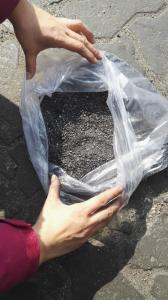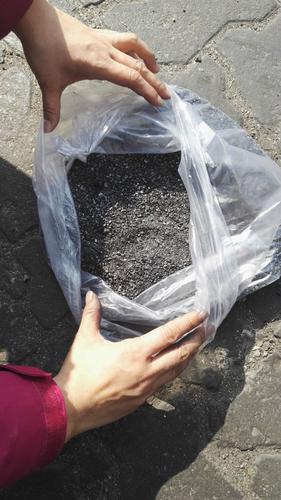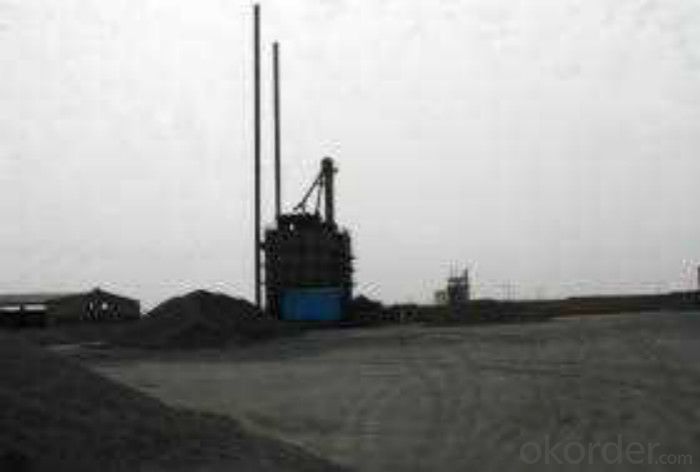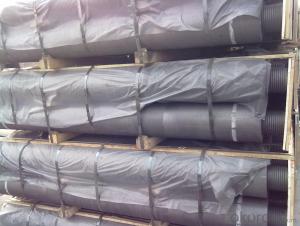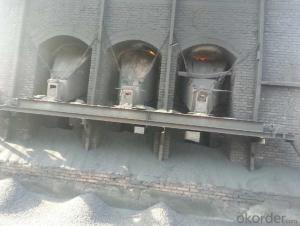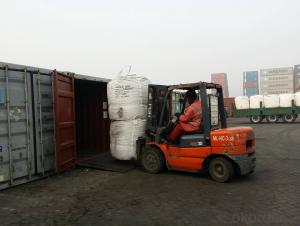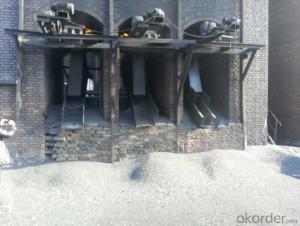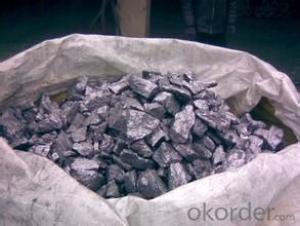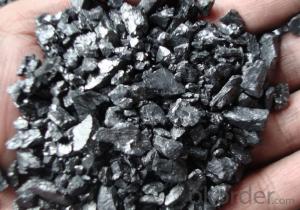FC90% Calcined Anthracite Coal with Fixed Carbon
- Loading Port:
- Tianjin
- Payment Terms:
- TT OR LC
- Min Order Qty:
- 20.5
- Supply Capability:
- 9650 m.t./month
OKorder Service Pledge
OKorder Financial Service
You Might Also Like
Introduction
Calcined Petroleum Coke comes from delayed coke which extracted from oil refinery. Although Calcined Petroleum Coke contains a little bit higher level of sulfur and nitrogen than pitch coke, the price advantage still makes it widely used during steel-making and founding as a kind of carbon additive/carburant.
Features
Carbon Additive also called Calcined anthracite Coal, Gas Calcined Anthracite Coal, Carbon Raiser, Recarburizer, injection coke, charging coke and etc.
It is playing more and more important role in the industry.The main raw material of our Carbon Additive is Ningxia unique high quality Taixi anthracite, with characteristic of low ash and low sulfur. Carbon additive has two main usage, fuel and additive. When being used as the carbon additive of steel-smelting, and casting, the fixed carbon may achieve above 95%.
Best quality Taixi anthracite as raw materials through high temperature calcined at 1200-1250 ℃ for 24 hours by the DC electric calciner with results in eliminating the moisture and volatile matter from Anthracite efficiently, improving the density and the electric conductivity and strengthening the mechanical strength and anti-oxidation, It has good characteristics with low ash, low resistivity, low carbon and high density. It is the best material for high quality carbon products, it is used as carbon additive in steel industry or fuel.
Specifications
PARAMETER UNIT GUARANTEE VALUE | |||||
F.C.% | 95MIN | 94MIN | 93MIN | 92MIN | 90MIN |
ASH % | 4MAX | 5MAX | 6MAX | 7MAX | 8MAX |
V.M.% | 1 MAX | 1MAX | 1.5MAX | 1.5MAX | 1.5MAX |
SULFUR % | 0.5MAX | 0.5MAX | 0.5MAX | 0.5MAX | 0.5MAX |
MOISTURE % | 0.5MAX | 0.5MAX | 0.5MAX | 0.5MAX | 0.5MAX |
Pictures
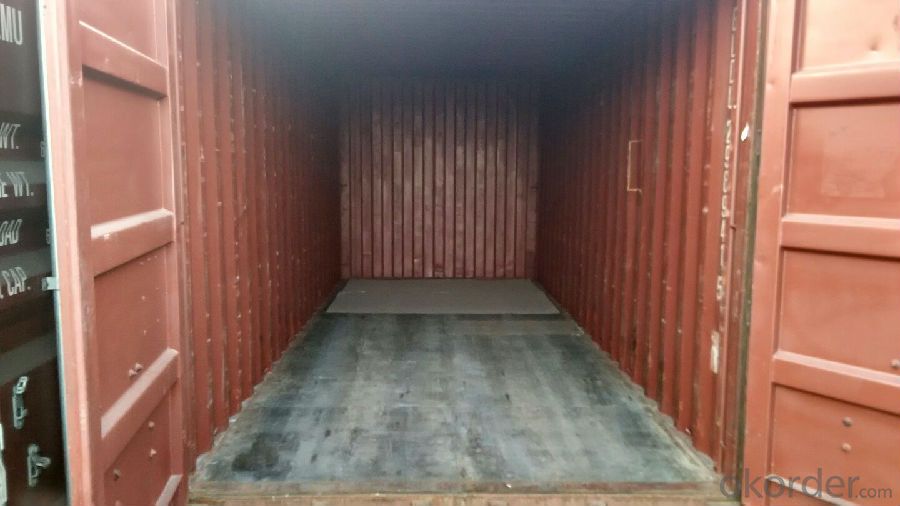
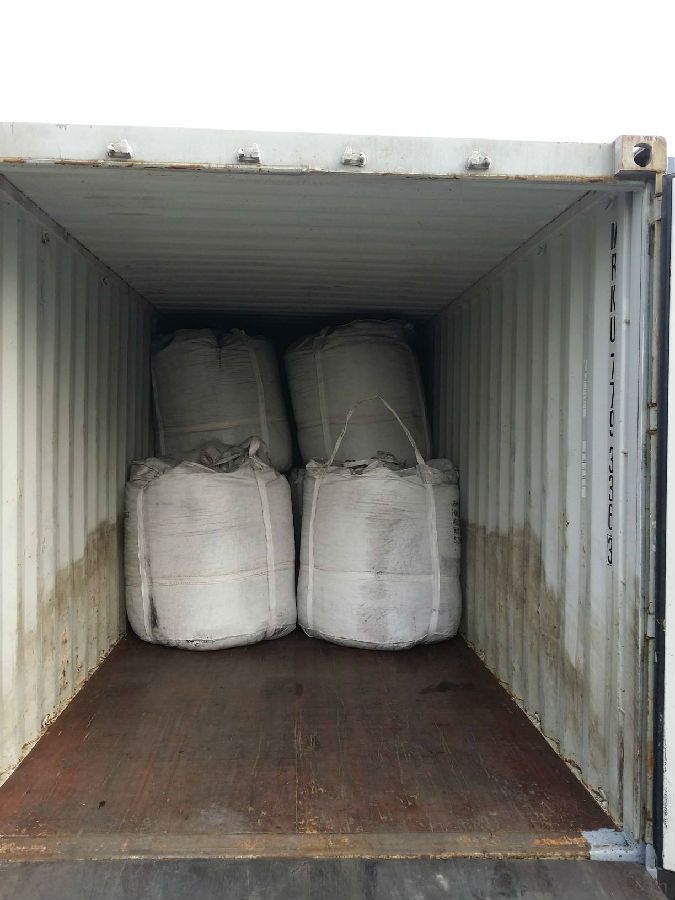
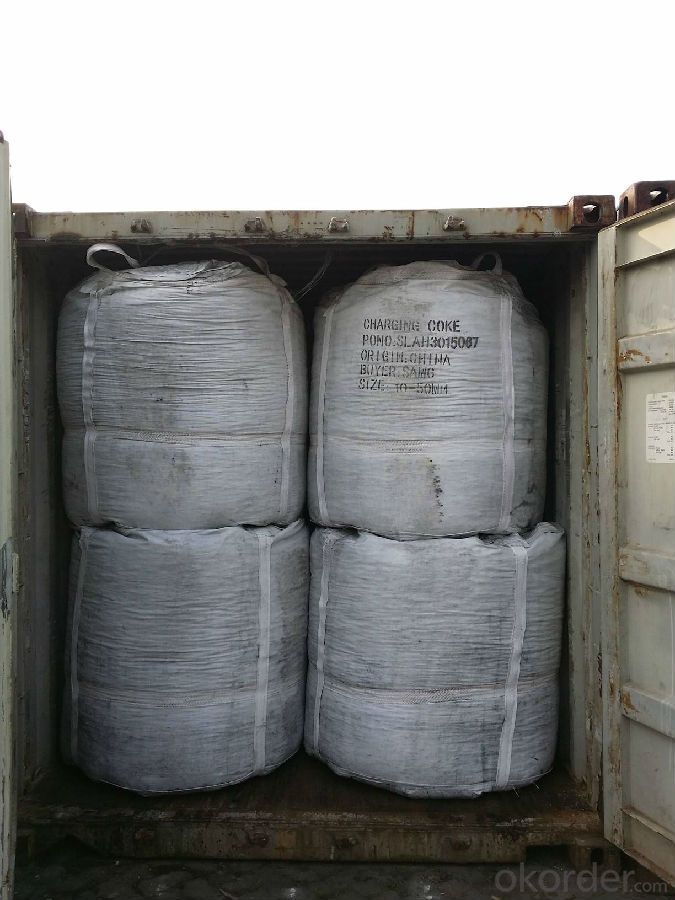
FAQ:
1. What is the packing?
In 25kg bag/ In jumbo bags without pallet/ Two jumbo bags with one pallet/ or as customers’ request
2. What is the production capacity?
10 thousand tons per month
3 What is payment term?
L/C, T/T
4 What is the service?
We will send sample to the third party(CIQ, CCIC, SGS,BV or to be discussed) for checking, and present the test certificate and loading repot of shipment.
- Q: What do you stand for?Tar, smoke, nicotine, and carbon monoxide. What do you mean? What's the size of the smoke, or the size of the smoke? What's the connection? Smoking is harmful, so how do you choose to smoke smaller cigarettes?
- The smoke was in the size of a smoker is refers to the amount of nicotine. The smoke is enough to mouth after the majestic. Enough cool,A novice at it. I think most of the carbon monoxide content. Carbon monoxide content is high after the head halo. The novice, this must be kept large. Tar, tar that smoke burning more fully the feeling in the mouth sweet, sweet fragrance..When is the strength of cigarettes and their taste.
- Q: What is carbon offsetting in the fashion industry?
- Carbon offsetting in the fashion industry refers to the process of compensating for the greenhouse gas emissions produced during the production, transportation, and disposal of fashion products. It involves investing in environmental projects, such as reforestation or renewable energy initiatives, to reduce or remove an equivalent amount of carbon dioxide from the atmosphere. This helps fashion brands and companies to mitigate their environmental impact and work towards achieving carbon neutrality.
- Q: How about carbon content of coal ash?
- 3, burning(1) prepared burning specimen with constant weight in the outer side of the crucible crucible, only a few 10-18ml and drying on the only black ink written into the code, mother Eph furnace, baby 50+-25 degrees Celsius temperature burning 1 hours after cooling, weighing with analytical balance, write down the number of crucible weight again after burning, and then weighed to weight two times constant (weight <=0.0004 grams). Record crucible weight G1.(2) place about 1 grams of dry ash sample in a constant crucible, and accurately weigh (accurate to 0.0001 grams), record (crucible + sample) weight G2. (3) a crucible with soil sample is placed in a crucible cover, heated to 875 degrees Celsius in the Maffei furnace for ignition, keep the temperature of 850+-25 degrees Celsius, after 2 hours, take out, after cooling, cooling to room temperature to put in a drying box. 4 W T'o X7 I3 L) |% "Z (4) weighing burned (crucible + specimen), down under the weight of G3.4. Calculate ash carbon content C (%) = (G2-G3) / (G2-G1) *100 (%)
- Q: Why does the carbon content of steel increase and the mechanical properties change?
- 3, according to the forming method classification: (1) forging steel; (2) cast steel; (3) hot rolled steel; (4) cold drawn steel4., according to chemical classification(1): A. carbon steel low carbon steel (C = 0.25%); B. (C = 0.25~0.60%) in carbon steel high carbon steel; C. (C = 0.60%).(2): A. alloy steel, low alloy steel (alloy element content is less than or equal to 5%) B. alloy (5~10% alloy element content, high alloy steel (C.) alloy element content > 10%).5. Classification according to metallographic structure(1) annealed state of A. eutectoid steel (ferrite + Zhu Guangti), B. eutectoid steel (Zhu Guangti), C. eutectoid steel (Zhu Guangti + cementite), D., bainitic steel (Zhu Guangti + seepage body)(2) normalizing condition: A. pearlitic steel; B. bainitic steel; C. martensitic steel; D. austenitic steel(3) no phase change or partial phase change occurs6, according to smelting method classification(1) according to the kind of furnaceA.: open hearth steel (a) acid open hearth steel; (b) basic open hearth steel.B. converter steel: (a) the Bessemer steel; (b) basic Bessemer steel. Or (a) bottom blown converter steel; (b) (c) side blown converter steel; BOF steel.C. electric furnace steel: electric arc furnace (a) steel; steel electroslag furnace (b); (c) induction furnace steel; (d) vacuum consumable steel; (E) electron beam furnace.(2) according to the degree of deoxidization and pouring systemA. boiling steel; B. semi killed steel; C. killed steel; D. special killed steel
- Q: But their chemical symbols are different, so they are different elements, different substances, but they feel the same thing... Tangled up ~!
- One kind is metal, one kind is nonmetal, the property is not lively, the property is stable,
- Q: How does carbon impact the stability of savannah ecosystems?
- The stability of savannah ecosystems relies heavily on carbon, which is crucial for all living organisms and involved in various ecological processes. Carbon exists primarily in the form of organic matter, which is vital for the growth and development of plants, the primary producers in these ecosystems. In savannahs, carbon affects stability in multiple ways. Firstly, carbon dioxide (CO2) plays a significant role in regulating the global climate as a key component of the Earth's atmosphere. Savannahs have the ability to sequester and store large amounts of carbon in their vegetation and soils, thereby mitigating climate change by reducing CO2 levels in the atmosphere. Carbon is also essential for plant growth through photosynthesis. Savannah plants, like grasses and scattered trees, utilize carbon dioxide from the air to produce carbohydrates and other organic compounds. This process not only provides plants with energy but also contributes to the overall productivity of the ecosystem. The stability of savannah ecosystems is also dependent on the interaction between plants and animals. Carbon-rich vegetation serves as a food source for herbivores, which in turn support predators. The carbon cycle ensures a continuous flow of energy and nutrients throughout the food web, maintaining ecosystem balance and stability. Moreover, the carbon content in savannah soils affects their fertility and ability to retain moisture. Organic matter derived from decaying plant material improves soil structure, nutrient availability, and water holding capacity. This, in turn, supports vegetation growth and sustains the diverse array of species found in savannah ecosystems. However, human activities such as deforestation, agricultural practices, and the burning of fossil fuels are disrupting the carbon balance in savannahs. Deforestation removes carbon-rich trees and plants, reducing the overall carbon storage capacity of the ecosystem. Additionally, the release of carbon dioxide from burning fossil fuels contributes to the greenhouse effect and climate change, which can disrupt savannah ecosystem stability. In conclusion, carbon plays a critical role in maintaining the stability of savannah ecosystems. It influences climate regulation, supports plant growth, provides energy for the food web, and enhances soil fertility. However, human activities that disrupt the carbon balance in these ecosystems can have detrimental effects on their stability and overall health. Therefore, it is essential to conserve and restore savannah ecosystems to preserve their carbon storage capacity and ensure long-term stability.
- Q: What are the consequences of increased carbon emissions on tourism industry?
- The consequences of increased carbon emissions on the tourism industry include the deterioration of natural attractions, such as coral reefs and glaciers, which are major tourist draws. Additionally, extreme weather events and rising sea levels can damage infrastructure and disrupt travel plans. The industry may also face increased regulations and taxes aimed at reducing carbon emissions, leading to higher operational costs for businesses. Overall, the consequences of increased carbon emissions on the tourism industry are detrimental to both the environment and the economy.
- Q: What role does carbon play in the carbon cycle?
- Carbon plays a crucial role in the carbon cycle as it is the key element that cycles through various reservoirs on Earth. It is present in both organic and inorganic forms and moves between the atmosphere, oceans, land, and living organisms. The carbon cycle is a complex process that involves several interconnected processes, including photosynthesis, respiration, decomposition, and combustion. In the atmosphere, carbon exists primarily as carbon dioxide (CO2) gas, which is essential for photosynthesis. Green plants and algae absorb CO2 during photosynthesis, converting it into organic compounds such as glucose and releasing oxygen as a byproduct. This process helps to regulate the amount of carbon dioxide in the atmosphere and provides the foundation for the food chain. Through respiration, living organisms break down organic compounds to release energy, producing carbon dioxide as a waste product. This carbon dioxide can be immediately reused by plants during photosynthesis, completing the cycle. Additionally, when organisms die, their remains are broken down by decomposers, such as bacteria and fungi, which release carbon dioxide back into the atmosphere. The carbon cycle also involves the transfer of carbon to and from the oceans. Carbon dioxide dissolves in seawater, where it can be taken up by marine organisms, such as phytoplankton and corals, during photosynthesis. Over time, the remains of these organisms sink to the ocean floor and can become locked away in sediments, forming fossil fuels like coal, oil, and natural gas. Through geological processes, these fossil fuels can be released back into the atmosphere when burned, contributing to increased carbon dioxide levels. Human activities, particularly the burning of fossil fuels and deforestation, have significantly impacted the carbon cycle. Excessive carbon dioxide emissions from these activities have led to an imbalance in the cycle, causing an increase in atmospheric carbon dioxide concentrations and contributing to global climate change. Overall, carbon plays a critical role in the carbon cycle as it is the fundamental building block of life and the key element that cycles through various reservoirs, regulating Earth's climate and sustaining life on our planet.
- Q: How to test aldehyde group and carbon carbon double bond in acrolein
- Can be oxidized into carboxyl aldehyde with silver ammonia solution or new copper hydroxide,
- Q: The victory of the lightning 3361 material is full of carbon fiber, and the 3363 is made of carbon fiber and resin, which is better??
- HelloThese two rackets are a good choice for beginners, and the price is almost the same. In theory, of course, the resin + carbon fiber is better. Carbon fiber increases the hardness of the racket, while the resin increases the toughness of the racket. Therefore, this kind of racket is softer than the center pole, suits the defensive and the ball control type. However, 3363 people as a basic racket, is not on the resin have too many requirements, as mentioned above, the content of resin may be less than 5%, which is why the two price is almost the sake of racket.My suggestion is that the landlord to buy carbon fiber 3361, first, this time longer, very popular, reputation has been good, two is 3363, some people feel too soft, the ball is not far away, with a very uncomfortable feeling. Of course, it depends on the characteristics of the landlord himself.I hope that the answer can help to you, I hope you join our team "badminton kingdom", to create our own kingdom of badminton!
Send your message to us
FC90% Calcined Anthracite Coal with Fixed Carbon
- Loading Port:
- Tianjin
- Payment Terms:
- TT OR LC
- Min Order Qty:
- 20.5
- Supply Capability:
- 9650 m.t./month
OKorder Service Pledge
OKorder Financial Service
Similar products
Hot products
Hot Searches
Related keywords
